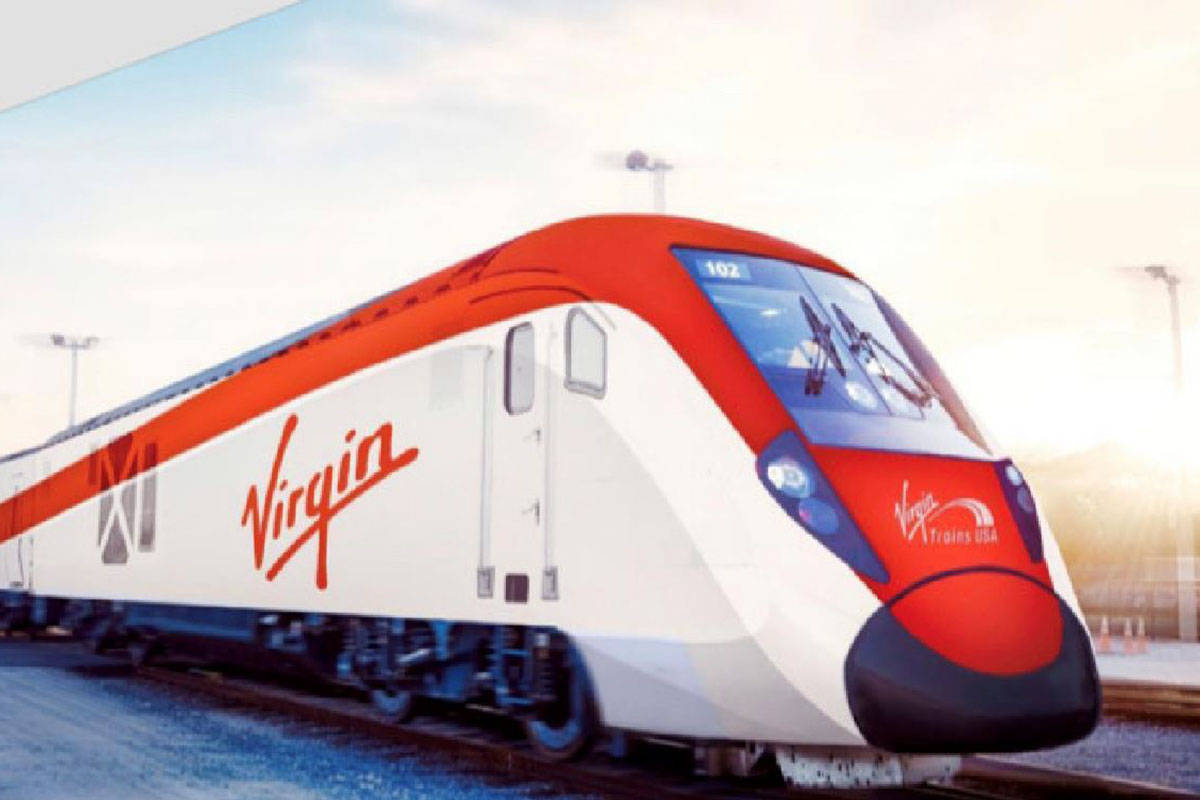High-speed rail project gets OK to use I-15 right of way in California
Virgin Trains USA’s high speed train plans got another boost after the company entered into a lease agreement with California to use existing right of way along Interstate 15 for the project.
Virgin Trains announced the agreement for the planned $4.8 billion project Tuesday morning with the California Department of Transportation (Caltrans) on authority from the California State Transportation Agency.
Plans call for the 170-mile-long rail line between the Victor Valley region and Las Vegas to be constructed within the median of I-15 in California.
“This is a major milestone in connecting two world-class destinations — Southern California and Las Vegas — with high-speed passenger rail service,” Caltrans Director Toks Omishakin said in a statement. “The XpressWest (Virgin Trains) trains will provide a convenient alternative to driving to and from Las Vegas while reducing greenhouse gas emissions.”
Once the rail line enters into Nevada, it will shift to the east of the interstate. The Nevada Department of Transportation is not pursuing a right-of-way lease agreement but is requesting Virgin submit a right-of-way occupancy permit to have access to the I-15 corridor in the Silver State.
Ryan Wheeler, senior project manager with NDOT, said the two sides have executed a few agreements that state they’re working toward that right-of-way occupancy permit, and everything seems to be on track for that.
“They’ll have the ability to be within the I-15 corridor,” Wheeler said. “Things are moving forward; they have an aggressive schedule.”
The first 2 miles of the planned route in Nevada would run in the median. Then, about 2 miles past Primm, the tracks would shift to the east of I-15. The rail line would shift back to the median near where the Union Pacific tracks travel underneath I-15 and continue until it nears St. Rose Parkway, where it would return to the east side of I-15 for the remainder of the route.
“With most of our interchanges … the cross road goes over the top of the freeway; they’ll (Virgin) end up going underneath those crossroads,” Wheeler said. “They will have their own exclusive corridor where they don’t have any railroad crossings.”
The electric and zero-emission trains will reach top speeds of 200 mph, making the trip in 85 minutes.
Around 135 miles of the system will be in California with the remaining 35 miles in Nevada. The Las Vegas station is planned for Las Vegas Boulevard between El Dorado Lane and Robindale Road, while the California station would be located off I-15 in north Victorville.
The project will be privately financed, mainly via private activity bonds in Nevada and California and is expected to break ground by the end of 2020.
California approved the allocation of $600 million in tax-exempt bonds in April, while Virgin Trains is still waiting on Nevada’s decision on $200 million in bonds from the state’s debt limit allocation.
That decision could come down at the end of July or the first part of August, depending on board members’ schedules, according to Terry Reynolds, director of Nevada’s Department of Business.
Internal Revenue Service guidelines allow Virgin to market up to four times the combined $800 million in bonding from both states, for a total of $3.2 billion. In March, the U.S. Department of Transportation approved $1 billion in tax-free bonds for the project.
As Virgin awaits Nevada’s decision on the bonds, the company hopes to mirror the success it has had in California to get the bond-selling process in motion.
“At every stage of this project we have received tremendous support from California, which recognizes the need for car-free, emission-free transportation options,” said Sarah Watterson, chief development officer for Virgin Trains. “This agreement is a big step toward our ultimate goal of reinventing passenger rail in America and gets us closer to generating critical jobs for the region.”
Contact Mick Akers at makers@reviewjournal.com or 702-387-2920. Follow @mickakers on Twitter.


















